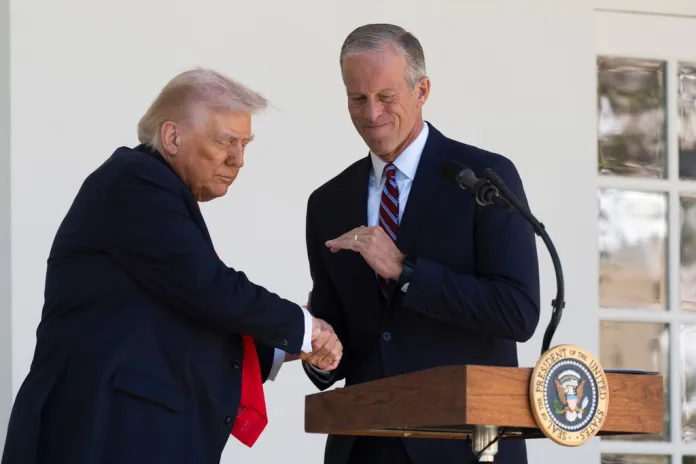New White House art shows Trump with US history’s ‘Tariff Men’ New White House art shows Trump with U.S. history’s ‘Tariff Men’
the White House has unveiled a new artwork in the West Wing titled “The Tariff Men,” which depicts president Donald Trump alongside four past U.S. politicians known for their tariff policies: Presidents William mckinley, Abraham Lincoln, thomas Jefferson, and Representative Henry Clay. The piece reflects trump’s focus on tariffs as a key aspect of his trade agenda, highlighting his efforts such as imposing reciprocal tariffs on various nations too protect American interests. The painting connects Trump to past leaders who also prioritized tariffs-McKinley, whom Trump cited as a political inspiration, enacted important tariff legislation in 1890; Lincoln supported tariffs to bolster Northern industry during the Civil War; Clay advocated protective tariffs as part of his “American system”; and Jefferson had a more complex stance, initially supporting tariffs for revenue but later wary of their constitutional implications. the new artwork follows other recent White House renovations under Trump, including plans for a new ballroom, and continues the management’s emphasis on trade policy as a cornerstone of its economic strategy.
New White House art shows Trump with US history’s ‘Tariff Men’
A former White House staffer revealed on Thursday new art that was put up in the West Wing, showing President Donald Trump with four former U.S. politicians known for their tariff policies.
Former White House deputy principal deputy press secretary, Harrison Fields, posted on X a photo of the new painting titled ‘The Tariff Men’. Alongside Trump in the art are former Presidents William McKinley, Abraham Lincoln, and Thomas Jefferson, as well as former Representative Henry Clay.
“A new addition to the West Wing,” Fields wrote on X, attached to the photo.
Tariffs are a core part of Trump’s trade policy, and have affected countries worldwide. In April, Trump announced sweeping “reciprocal” tariffs on most nations. Since then, foreign governments have been working with the administration to facilitate deals in response to the tariffs.
The Congressional Budget Office projected that the administration’s tariff policy would decrease the total deficits by up to $4 trillion over the next decade.
The new painting comes after Trump renovated the Rose Garden and his announcement of plans to expand the White House with a new ballroom.
Of the four men featured in the new painting, Trump cites McKinley as a political inspiration. The 25th president led efforts to pass the Tariff Act of 1890. On Trump’s first day in office, he said McKinley is the “tariff king” when he renamed Denali as Mount McKinley in his honor.
McKinley’s 1890 tariff bill increased duties on imported goods to 50% during the manufacturing boom in the United States.
Lincoln endorsed tariffs during his administration, saying in 1861, “the tariff is to the government what a meal is to the family.”
He enacted tariff policies during the Civil War to protect American manufacturing, a key difference between the southern and Northern economies.
Henry Clay, a former Kentucky senator and then-speaker of the House, delivered a praised speech in 1824 supporting protective tariffs as part of his “American System.” His protectionist tariff policies were accompanied with the creation of the national bank and government infrastructure subsidies.
In contrast, President Jefferson had a more nuanced view on tariffs. He relied on them early in his administration as a large source of revenue, but would later express constitutional concerns. He called tariffs contradictory to the idea of limited government.
During the Napoleonic wars, Jefferson signed the Embargo Act of 1807, forbidding trade with France and Britain so the countries would have to respect America’s neutrality in the conflict. He called it “peaceable coercion.”
WHITE HOUSE SUSPENDS TOURS TO CONSTRUCT TRUMP-REQUESTED BALLROOM
The Embargo Act, however, devastated the American economy by 1808 and propelled the U.S. into a conflict with England for Jefferson’s successor, James Madison, according to the University of Virginia.
The Washington Examiner contacted the White House for comment.
" Conservative News Daily does not always share or support the views and opinions expressed here; they are just those of the writer."




